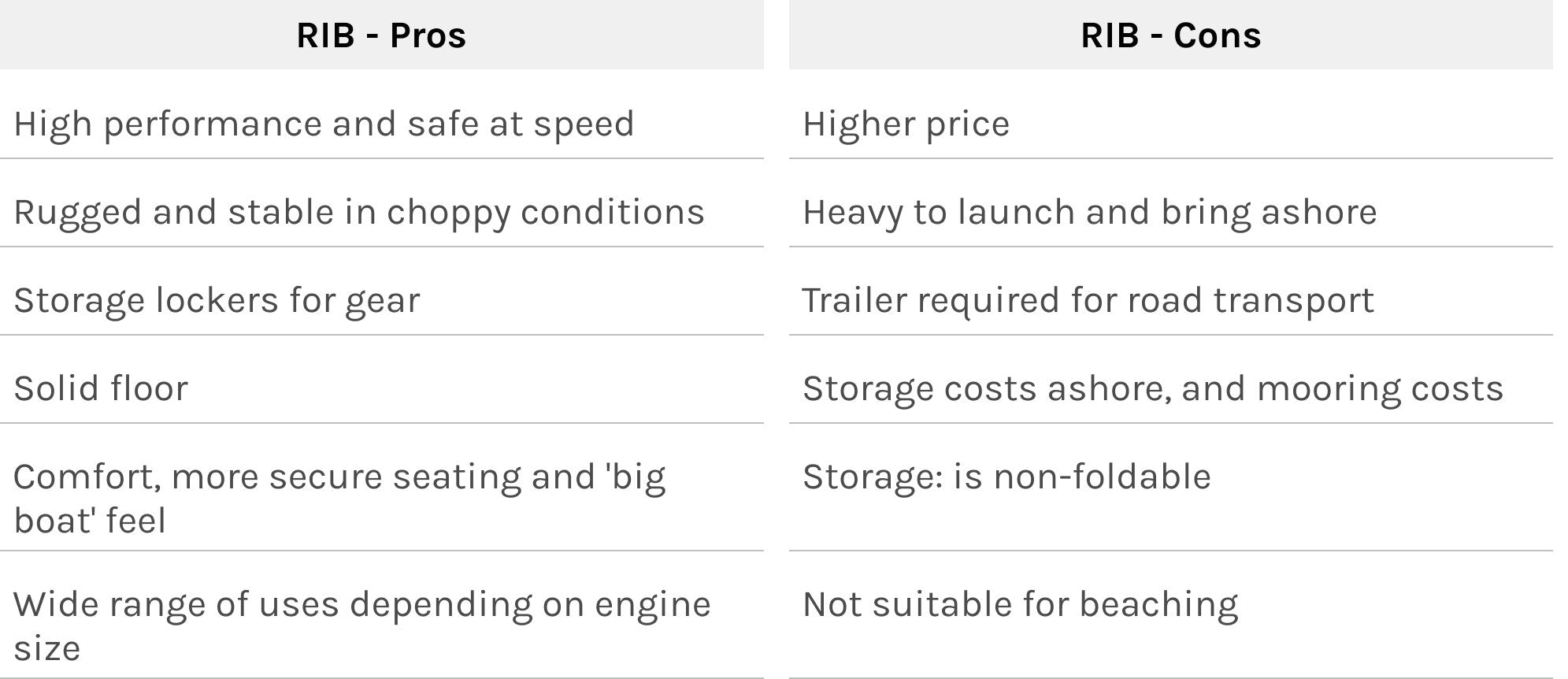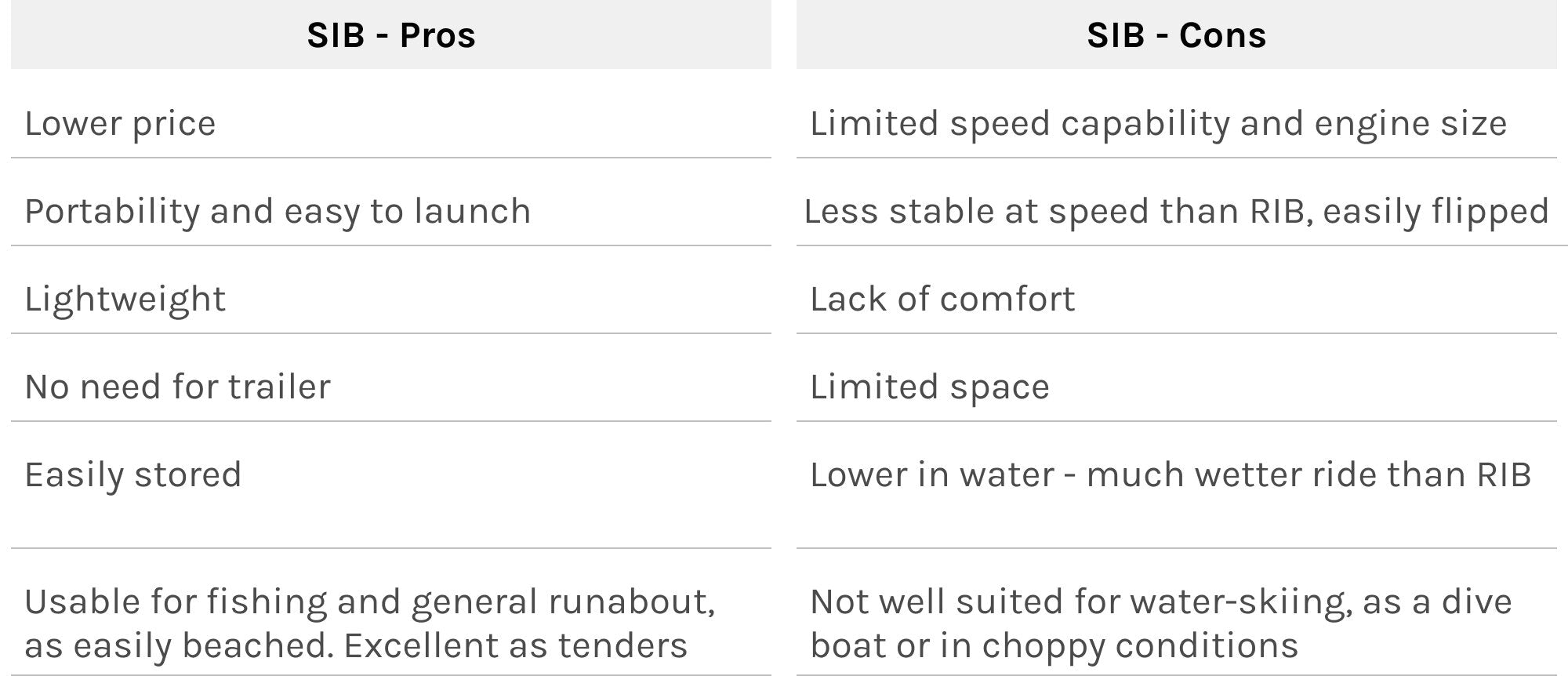
Making the Right Boat Choice: RIB vs SIB
Choosing the perfect boat for your boating adventures can be an exciting yet challenging task. Among the wide range of options available, rigid inflatable boats (RIBs) and soft inflatable boats (SIBs) have gained popularity among water enthusiasts. In this article, we will explore the characteristics and considerations of RIBs and SIBs to help you make an informed decision based on your boating needs.
Rigid Inflatable Boat (RIB)
A rigid inflatable boat, commonly known as a RIB, is a motorized watercraft that combines the sturdiness of a solid hull with the buoyancy provided by inflatable tubes. RIBs are renowned for their excellent performance on different types of water and are often preferred for their versatility and speed.
One of the key advantages of a RIB is its lightweight construction, allowing you to travel faster with less water resistance. This characteristic makes RIBs an ideal choice for those seeking a thrilling boating experience. Whether you plan to cruise along calm lakes or navigate through rough seas, a RIB will provide a stable and safe ride.
RIBs come in various designs to cater to different water activities. Some RIBs feature long, narrow, deep V-hulls that are specifically designed for high-performance boating, ensuring exceptional speed and maneuverability. On the other hand, RIBs with wider hulls and a shallower V-shape at the bow provide stability and comfort, making them suitable for offshore fishing or leisurely family outings.
While RIBs may be heavier than their soft-sided counterparts, they offer additional comfort features such as snug seating positions and ample storage space. Whether you're embarking on a day trip or planning a longer expedition, RIBs provide a comfortable and enjoyable boating experience.

RIB Materials
RIBs are constructed using a variety of materials, depending on the desired strength, durability, and budget. While recreational RIBs may not adhere to the stringent specifications of professional rescue boats, they still follow similar fundamental principles.
The hull of a RIB is typically made of glass-reinforced plastic (GRP), also known as fiberglass. GRP provides a balance between strength and weight, making it a popular choice for recreational RIBs. However, for those seeking even lighter and more rigid hulls, materials such as aluminum and carbon fiber are also available, albeit at a higher cost.
Inflatable tubes, an essential component of a RIB, are usually made of either Hypalon or PVC. Hypalon is known for its durability and resistance to UV rays, abrasion, and harsh weather conditions. Although more expensive, Hypalon tubes offer easier repair options. PVC, a more cost-effective alternative, provides good resistance to wear and tear but may not be as durable as Hypalon.
It is worth noting that RIBs come in various sizes, engine configurations, and pricing categories, allowing boaters to find the perfect fit for their specific needs and budget.
Soft Inflatable Boat (SIB)
Soft inflatable boats, or SIBs, are a popular choice for boating enthusiasts who prioritize portability, affordability, and ease of use. Unlike RIBs, SIBs lack a solid hull and instead rely on inflatable tubes for buoyancy and stability.
One of the primary advantages of SIBs is their relatively lower cost compared to RIBs. The absence of a rigid hull significantly reduces manufacturing costs, making SIBs a budget-friendly option for boaters. In addition, SIBs are generally lightweight and highly portable. Many SIB models feature a removable slatted floor, allowing for easy deflation and transportation in a car or other vehicle. This portability makes SIBs an excellent choice for those who enjoy exploring remote waterways or frequently travel with their boats.
SIBs are especially well-suited for activities like shallow water fishing and beaching. Their low draft and soft hull make them ideal for maneuvering in shallow waters without causing damage to the boat or the environment. However, it is important to note that SIBs may be more challenging to navigate in heavy weather conditions due to their lightweight construction.
Despite their lightweight nature, SIBs can offer generous storage space for fishing gear, making them popular among anglers. The ample storage capacity ensures that you have all the necessary equipment within reach, enhancing the convenience of your fishing adventures.

SIB Materials
Similar to RIBs, SIBs also utilize materials like Hypalon and PVC for their inflatable tubes. Hypalon tubes are more durable and resistant to UV rays, chemicals, and extreme temperatures, making them a preferred choice for boaters seeking enhanced longevity and performance. PVC tubes, while less expensive, provide good durability and are suitable for boaters on a tighter budget.
SIBs come in a wide variety of options across different price ranges, allowing boaters to select a model that aligns with their specific needs, preferences, and budgetary constraints.
Available Options
Both RIBs and SIBs offer a range of options when it comes to flooring. Some popular options include:
-
Floors with super-compressed air: These floors provide excellent rigidity and stability without the need for a solid material floor. They can be inflated to a high pressure, offering a solid platform for activities on the boat.
-
Roll-up slat floor: This type of floor consists of slats that can be rolled up for easy storage and transportation. When assembled, the slats provide a stable surface for walking and standing.
-
Ribbed air floor: This flooring option features a series of inflatable ribs that provide support and rigidity. The ribbed design allows for easy inflation and deflation, making it convenient for storage and transport.
-
Hard floor made of fiberglass, aluminum, or wood panels: For those seeking a more solid and permanent flooring solution, RIBs and SIBs can be equipped with hard floors made of materials like fiberglass, aluminum, or wood panels. These floors offer increased stability and durability, providing a more solid foundation for various activities.
Differences Between RIBs and SIBs
Understanding the differences between RIBs and SIBs is essential in selecting the boat that best suits your needs. While both types offer unique advantages, they cater to different boating preferences and activities.
If you plan on undertaking long-distance trips in rough waters, a RIB is likely the better option. RIBs excel in speed, stability, and performance, making them ideal for adventurous boaters seeking thrilling experiences on open waters. They are also well-suited for activities such as offshore fishing and leisurely cruising.
On the other hand, if you primarily intend to use your boat in calm or sheltered water, a SIB may be the more suitable choice. SIBs are lighter, more affordable, and highly portable, making them perfect for recreational boating, fishing in shallow waters, and beach hopping. SIBs offer the advantage of easy storage and transportation, allowing you to explore remote waterways or travel with your boat hassle-free.
Safety Considerations
Safety is paramount when engaging in any boating activity. Both RIBs and SIBs can provide a safe boating experience when operated correctly and equipped with the necessary safety gear. RIBs, with their rigid hulls, offer enhanced stability and shock absorption, ensuring a comfortable and secure ride even in rough waters. Regular maintenance and inspections are crucial to keeping your boat in optimal condition and ensuring its long-term safety.
SIBs, although lightweight and highly portable, may require additional caution when navigating in heavy weather conditions. It is important to be aware of their limitations and adjust your boating plans accordingly. As with any boat, following safety guidelines, wearing appropriate safety gear, and staying informed about weather conditions are essential for a safe and enjoyable boating experience.
Making Your Purchase Decision
When it comes to purchasing your inflatable boat, thorough research and consideration are key. Begin by gathering information online, exploring boating forums, and seeking advice from experts in the field. Boat shows provide an excellent opportunity to interact with professionals, gain hands-on experience with different models, and gather valuable insights to inform your decision-making process.
Evaluate your boating needs, preferences, and budgetary constraints to determine whether a RIB or SIB aligns better with your requirements. Consider the type of water you plan to navigate, the activities you wish to engage in, and the level of convenience and portability you desire. By carefully considering these factors, you can confidently select the inflatable boat that will provide you with endless hours of boating enjoyment. Happy boating!
